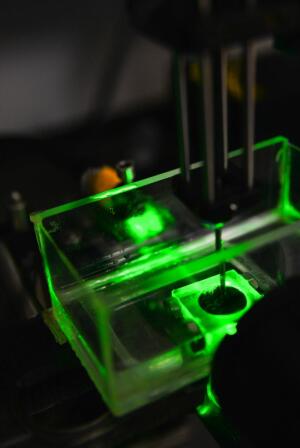by
Lauren Dubinsky, Senior Reporter | December 07, 2016

NTU's new ultrasound device
By combining ultrasound technology with 3-D printing technology, scientists from Nanyang Technological University in Singapore have developed a way to produce significantly sharper images.
This new approach may enable more accurate use of ultrasound to destroy tumors, loosen blood clots and deliver drugs into targeted cells.
Current ultrasound devices are equipped with fixed-shape cylindrical or spherical lenses, which are vital to the image acquisition but may also hamper clarity. With 3-D printing, complex custom lens shapes can be generated that allow for sharper images.



Ad Statistics
Times Displayed: 1
Times Visited: 0 Keep biomedical devices ready to go, so care teams can be ready to care for patients. GE HealthCare’s ReadySee™ helps overcome frustrations due to lack of network and device visibility, manual troubleshooting, and downtime.
The 3-D printed lenses can focus the ultrasound waves at multiple sites or shape the focus specially to a target.
By reducing image distortion and consequently providing more accurate differentiation between cancerous and non-cancerous soft tissue, the technology may prove especially useful for tumor imaging.
The ultrasound device has been rigorously tested, according to the researchers, and the results have been published in the American Institute of Physics peer-reviewed journal,
Applied Physics Letters. The team is currently working with various industry and health care partners to look at developing prototypes for medical and research applications.
"In most medical surgeries, precision and non-invasive diagnosis methods are crucial," Claus-Dieter Ohl, leader of the team and associate professor at NTU, said in a statement, "This novel device not only determines the focus of the wave but also its shape, granting greater accuracy and control to medical practitioners."
Ohl added that the way medical devices are created needs to be rethought. This new 3-D printing approach is expected to promote new medical techniques and research opportunities in fields such as surgery and biotechnology.
Researchers could potentially use the sound waves to measure elastic properties of cells in a petri dish in order to evaluate how they respond to forces. That will be useful when distinguishing between harmful and benign tumor cells.

